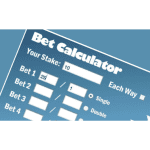Understanding Back Betting
In the world of sports betting, back betting is a fundamental concept that every punter should grasp. When you place a back bet, you are essentially betting on an outcome to happen. For instance, if you back a team to win a football match, you will profit if that team emerges victorious. Back betting is the more traditional form of betting where you are predicting a positive outcome.
It is important to note that when you back a bet, your potential losses are limited to your stake. However, the potential upside can be substantial if your prediction is correct. Back betting offers a straightforward approach for beginners in the betting world, allowing them to support a specific outcome of an event with the hope of making a profit. It is a simple yet exciting way to engage with sports events and other betting opportunities.
Understanding Lay Betting
Lay betting involves taking on the role of the bookmaker by betting on an outcome not to happen. Instead of backing a selection to win, you are betting that it will lose. This type of betting is common in betting exchanges, where individuals can act as both the backer and the layer.
In lay betting, your potential losses can be greater than your stake, as you are essentially risking the winnings of the backer. It’s crucial to understand the potential risks involved and to manage your bets carefully. Understanding the concept of lay betting can provide you with more opportunities to profit from various outcomes in sports betting.
Key Differences Between Back and Lay Betting
Back betting and lay betting are two distinct strategies in the world of sports betting. One fundamental difference lies in the direction of the bet. When you back a bet, you are betting on a certain outcome to occur, just like placing a traditional bet. On the other hand, lay betting involves betting against an outcome, essentially taking on the role of the bookmaker and betting on something not to happen.
Another key difference between back and lay betting is the potential for profit and loss. In back betting, your potential profit is limited to your stake multiplied by the odds if your bet wins. However, in lay betting, your potential loss is not capped and can be significantly higher than your initial stake if the outcome you bet against does occur. This increased risk in lay betting can lead to higher rewards but also requires careful consideration and risk management.
When to Back a Bet
When considering when to back a bet, it is important to assess the strength of your confidence in the outcome. Backing a bet is typically done when you believe that the event or outcome will happen as predicted. This can be based on various factors such as past performance, current form, and expert analysis.
Furthermore, it is advisable to back a bet when you have thoroughly researched the event and have a good understanding of the market. By conducting thorough research and analysis, you can increase your chances of making an informed decision when backing a bet. Remember, backing a bet is essentially showing confidence in a particular outcome, so it is crucial to have a solid rationale behind your decision.
When to Lay a Bet
When considering when to lay a bet, it is crucial to assess the likelihood of a certain outcome not materializing. Lay betting occurs when you believe that a specific event will not occur, thus positioning yourself as the “bookmaker.” This strategic move can be employed when you have strong reasons to believe that a certain team will not win, a player will not score, or an outcome will not happen.
Furthermore, laying a bet can be a wise decision when you have insider knowledge, statistical evidence, or expert analysis pointing towards the potential failure of a particular outcome. By carefully studying the odds available and conducting thorough research, you can identify opportunities where laying a bet may prove to be more profitable than backing a bet. It is important to remember that successful lay betting requires a combination of intuition, research, and understanding of the market dynamics.















